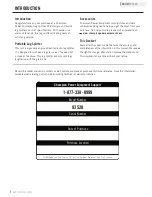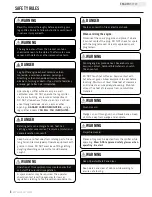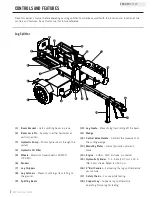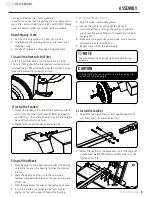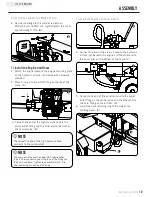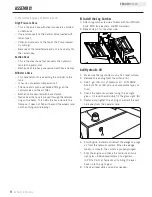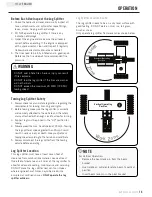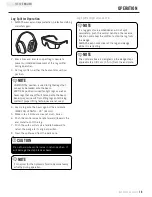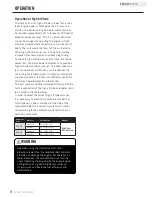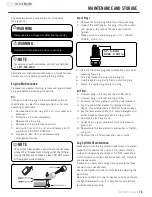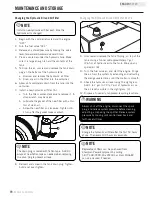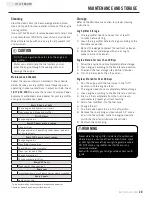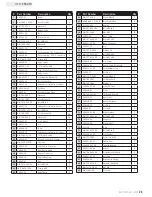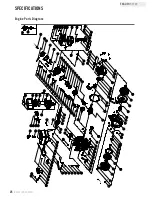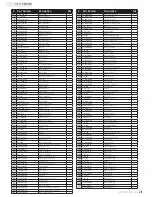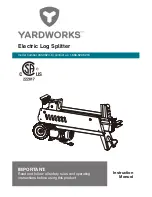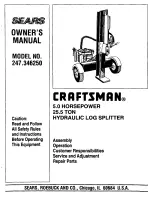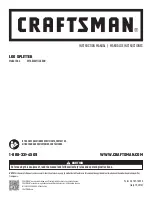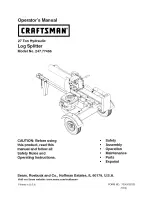
11
REV 93520-20130425
ENGLISH
93520
ASSEMBLy
6. Start Engine. Extend and retract the wedge to purge
air from the hydraulic system. When the wedge
motion is smooth, the system is properly purged.
7. Stop the engine and check the hydraulic oil tank
sight glass. Add approximately 1 to 2 gallons
(3.79 to 7.6 L) of hydraulic oil to bring the level
back up to the sight glass.
8. Check oil level daily and add as needed.
A
B
Add Hydraulic Oil
1. Make sure the log splitter is on a flat, level surface.
2. Remove the oil plug from the oil tank. (A)
3. Add 7 gal. (26.5 L) of hydraulic oil - 10W AW32,
ASLE H-150, or ISO 32 are all acceptable types of
fluid.
4. Check the hydraulic oil level using the oil sight
glass. Oil level should visibly fill the glass sight. (B)
5. Replace and tighten the oil plug and orient the vent
hole away from the operator zone.
8) Install the Log Catcher
1. Attach log catcher to side of beam with four M10x15
bolts, M10 lock washers, and M10 washers.
2. Repeat step 1 for the other side.
High Pressure Hose
– This is the only hose with steel connectors crimped
on both ends.
– One end connects to the Control Valve (sealed with
teflon tape).
– Other end connects to the top of the Pump (sealed
by O-Ring).
– Because of the male/female ends, this hose only fits
the correct way.
Suction Hose
– This is the clear hose that connects the hydraulic
tank to the pump inlet.
– Both ends of the hose are secured with hose clamps
Oil Return Hose
– This hose returns the oil exiting the cylinder to the
tank.
– It has no connectors crimped onto it.
– The hose ends push over barbed fittings on the
control valve and the oil filter.
– Both ends are secured with hose clamps.
– Notice how the hose is placed through the retainer
ring on the beam. This holds the hose close to the
frame so it does not flop out beyond the wheels (and
catch on things while towing).
7) Install the Engine and Hoses Cont’d.




